
Dorado is a constellation in the Southern Sky. It was named in the late 16th century and is now one of the 88 modern constellations. Its name refers to the mahi-mahi, which is known as dorado ("golden") in Spanish, although it has also been depicted as a swordfish. Dorado contains most of the Large Magellanic Cloud, the remainder being in the constellation Mensa. The South Ecliptic pole also lies within this constellation.

NGC 1903 is a star cluster in the Large Magellanic Cloud in the constellation Dorado. It was discovered in 1834 by John Herschel with an 18.7-inch reflecting telescope.
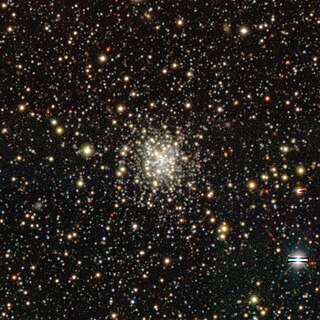
NGC 2241 is an open cluster in the constellation Dorado. Located in the Large Magellanic Cloud, it was discovered by John Herschel on January 31, 1835.

NGC 2164 is a 10th-magnitude open cluster in the Dorado constellation. The celestial object was discovered on September 27, 1826, by the Scottish astronomer James Dunlop. Its apparent size is 2.5 arcmin. It is located in the Large Magellanic Cloud.

NGC 2197 is an centrally condensed open cluster within the Large Magellanic Cloud, in the Dorado constellation. It is estimated to be 400 million years old.
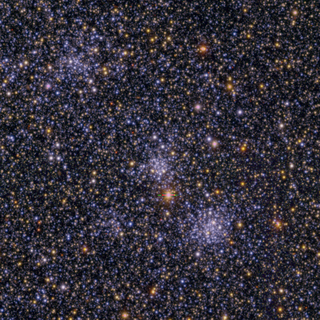
NGC 220 is an open cluster located approximately 210,000 light-years from the Sun in the Small Magellanic Cloud. It is located in the constellation Tucana. It was discovered on August 12, 1834 by John Herschel.

NGC 1869 is an open cluster in the Dorado constellation. It is located within the Large Magellanic Cloud. It was discovered by James Dunlop on September 24, 1826, using a telescope reflector with a nine-inch aperture. It is a large cluster of rich scattered stars. It is part of a triple association with NGC 1871 and NGC 1873. It has an apparent magnitude of 14.0.

NGC 1929 is an open cluster associated with the emission nebula located within the N44 nebula in the Dorado constellation and part of the Large Magellanic Cloud. It was discovered by James Dunlop on August 3, 1826. Its apparent magnitude is 14.0, and its size is 0.8 arc minutes.
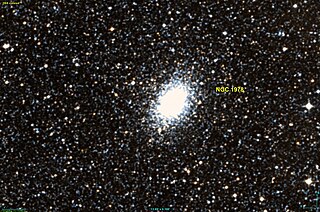
NGC 1978 is an elliptical shaped globular cluster or open cluster in the constellation Dorado. It is located within the Large Magellanic Cloud. It was discovered by James Dunlop on November 6, 1826. At an aperture of 50 arcseconds, its apparent V-band magnitude is 10.20, but at this wavelength, it has 0.16 magnitudes of interstellar extinction. It appears 3.9 arcminutes wide. NGC 1978 has a radial velocity of 293.1 ± 0.9 km/s.

NGC 2002 is an open cluster located in the Dorado constellation and is part of the Large Magellanic Cloud. It was discovered by James Dunlop on September 24, 1826. Its apparent magnitude is 10.1, and its size is 2.0 arc minutes.

NGC 1955 is an open cluster associated with an emission nebula located in the Dorado constellation. This nebula is part of the H II region which is part of the Large Magellanic Cloud and was discovered by James Dunlop on August 3, 1826. Its apparent magnitude is 9.0, and its size is 1.8 arc minutes.

NGC 1971 is an open cluster which is in the Dorado constellation and is part of the Large Magellanic Cloud. It was discovered by John Herschel on December 23, 1834. Its apparent size is 11.9 by 0.80 arc minutes.
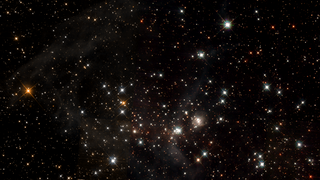
NGC 1974 is an open cluster associated with an emission nebula which is located in the Dorado constellation which is part of the Large Magellanic Cloud. It was discovered by James Dunlop on November 6, 1826, and later observed by John Herschel on January 2, 1837, subsequently cataloged as NGC 1991. Its apparent magnitude is 9.0 and its size is 1.7 arc minutes.
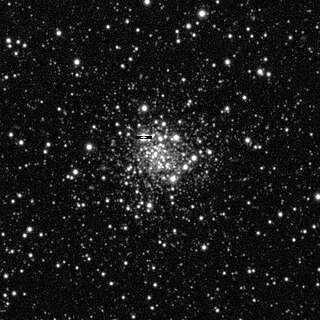
NGC 1997 is an open cluster located in the Dorado constellation which is part of the Large Magellanic Cloud. It was discovered by John Herschel on November 30, 1834. Its apparent magnitude is 13.43 and its size is 1.80 arc minutes.
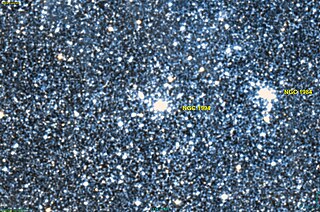
NGC 1994 is an open cluster in the Dorado constellation which is located in the Large Magellanic Cloud. It was discovered by John Herschel on 16 December 1835. It has an apparent magnitude of 9.8 and its size is 0.60 arc minutes.
NGC 1986 is an open cluster which is located in the Mensa constellation which is part of the Large Magellanic Cloud. It was discovered by James Dunlop on September 27, 1826. It has an apparent magnitude of 11.31 and its size is 2.80 by 2.40 arc minutes.

NGC 1983 is an open cluster associated with an emission nebula which is located in the Dorado constellation and part of the Large Magellanic Cloud. It was discovered by John Herschel on 11 November 1836. It has an apparent magnitude of 9.9 and its size is 1.0 arc minutes.

NGC 1969 is an open star cluster in the Dorado constellation and is part of the Large Magellanic Cloud. It was discovered by James Dunlop on September 24, 1826. Its apparent size is 0.8 arc minutes.

NGC 1970 (also known as ESO 56-SC127) is a bright open cluster and emission nebula in the Dorado constellation in the Large Magellanic Cloud. It was discovered by John Herschel on January 31, 1835. Its apparent size is 8.0. It is commonly known as the Tulip Nebula.

NGC 1712, also known as GC 942, JH 2685, and Dunlop 112 is an open cluster in the constellation of Dorado. It is relatively small, and is located inside the Large Magellanic Cloud. NGC 1712 was originally discovered in 1826 by James Dunlop, although Herschel rediscovered it in 1834. Nine variable stars have been discovered in it so far, with three suspected to be binary systems.



















